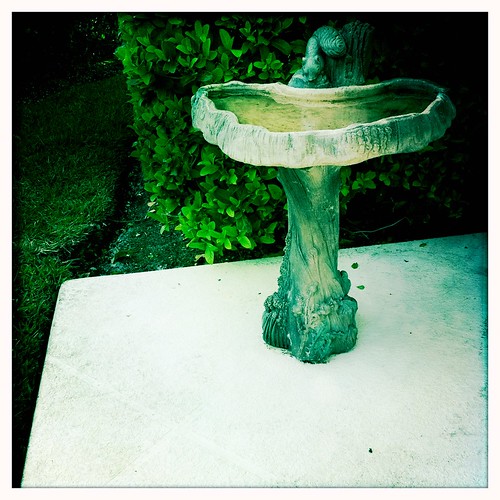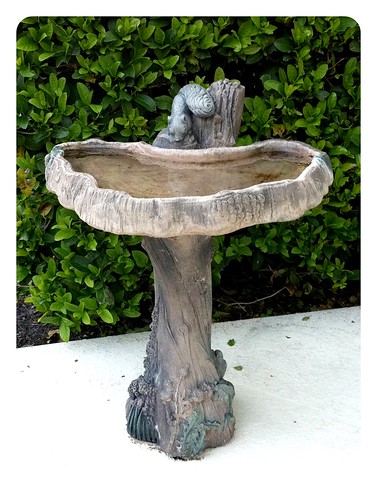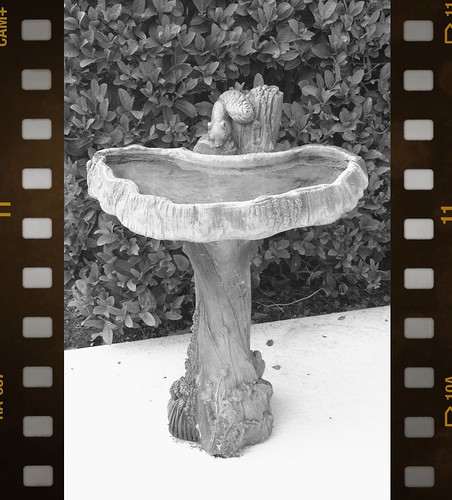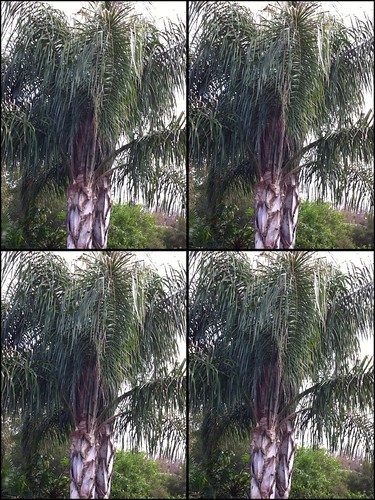With the first cellphones that had cameras, you could take a photo and that was it. There was no way to manipulate the image without figuring out how to get it on your computer and using something like Photoshop to modify the image. Today, there are hundreds of apps you can download to your iPhone that can be used to manipulate your images. In fact, I could probably make a career out of reviewing and writing about camera/photography related apps for the iPhone alone if anyone was interested. Since this is one of a series of 4 or 5 articles and not a career, I selected three apps for this article – Hipstamatic, Camera+ and Adobe Photoshop Express. My “scientific” method for selecting these three apps was simple. The first two are hugely popular and the Photoshop (PS) Express is because I use Photoshop all the time and wanted to see how the less than 64 calorie lite version worked. I also selected those three because each one worked differently.
Hipstamatic
With Hipstamatic, you select the result you want to achieve by selecting the film, lens and flash before you take the shot. Once you take the shot, you’re done, at least as far as using Hipstamatic. That’s probably part of the appeal. It works like cameras did twenty, thirty years ago or longer. Thirty years ago if I wanted to produce a grainy black & white image, I put Tri-X (400 ASA) or T-Max 400 film in my camera and started shooting. If I wanted less grain I would shoot with Plus-X (125 ASA) or T-Max 100. Once the film was in the camera and you captured the image, even though you could manipulate the image in the darkroom, you couldn’t make Tri-X look like Plus-X regardless of what you did.
The app costs $1.99 and comes with three film type effects, three lens type effects and three flash type effects. You can also purchase any of an additional five packages for $0.99 each containing various film, flash and lens combinations. The basic package gives you 27 possible combinations of film, lens and flash, and if you buy all of the additional five packages you would have a total of 441 possible combinations. However, my guess is that most people that use Hipstamatic have a few favorite combinations that they use almost all the time to achieve the overall effects they desire.

To demonstrate how these apps work, I decided to use this bird bath in my back yard as a subject. This first image was taken with my iPhone without any manipulation to provide a base line for comparison.

This image was captured using the Blanko film, standard flash and John S lens combination in Hipstamatic.

This image is the result of the Ina’s 69 film, Jimmy S lens and Dreampop flash combination.

This is the last image taken with Hipstamatic and combines Kodot film, Kaimal Mark II lens and Cherry Shine flash.
As I indicated above, there are 27 different combinations in the basic package. These combinations were selected randomly and I haven’t tried all 27 to determine the combinations I prefer, but these four images at least provide an idea of what kind of effects the app provides. You do have to select a film and a lens, but you have a choice as to whether or not you use the flash when you take the photo.
On the plus side, I think it’s a great app for the 15 to 30 or 15 to 40 age groups. I think it’s more of a “fun” app than an image manipulation app, but in looking at images posted on Flickr, I found a number of creative applications that produced some interesting arty kind of images.
On the negative side, I found it difficult to compose an image in the small square “viewfinder” the app provides. Frequently the key subject was centered in the “viewfinder” and then off to one side or the other in the finished image. It also seems slow to change the selections, take a photo and for the photo to “develop” but that could be the user as much as the app.
Camera+
At the risk of upsetting a lot of Hipsamatic fans, I believe that Camera+ is superior to Hipstamatic for one very important reason. With Hipstamatic and similarly designed apps, you select the effects and hope the result is what you’re trying to achieve. Camera+, on the other hand, is an app that allows you to manipulate the image after you’ve captured it. In other words, it’s a post processing app that is available for a price of $1.99.
The app effects are laid out in a logical workflow order. You can either capture the image once you have opened the app or you can “grab” an image from your camera roll and manipulate it in Camera+. Once you’ve selected the image there are five categories of changes you can make:
1. Scenes – this is presented as a lighting difference. It appears that it is making small changes to EV and White Balance depending on the scene type you select – night, portrait, beach, sunset, etc.
2. Adjust – this rotates the image 90 degrees left or right and/or flips the image vertically or horizontally. The horizontal flip is interesting because it mimics the result of reversing a negative in an enlarger so that left becomes right and right becomes left.
3. Crop – this category allows you to crop freeform the way you want the image or you can use a number of pre-set crops that create various shapes and image sizes.
4. FX Effect – Modifies the color and tone of the image. There are 27 choices plus an additional 9 that can be purchased for $0.99.
5. Borders – Like Crop, this one is self-explanatory. There are 18 different borders from which you can select.
The following three images were taken with the Camera+ app and manipulated in the app to produce the images.



Photoshop Express
With Photoshop Express you can:
1. Crop, straighten, rotate or flip the image
2. Change the exposure, saturation, tint, contrast or convert to black & white.
3. Sharpen, use soft focus or sketch
4. Effects which are mostly color and tone changes as well as add borders to the image.


As you might expect, this isn’t Photoshop CS5 or Lightroom 3, but for a free app, it does a pretty good job. The first image is the same tree in the snow that I used in the last article. As I pointed out, the sensor in the iPhone exposes for 18% gray and causes the snow to look gray. The second image I changed the exposure to render the snow as white and sharpened the image somewhat. I made no other corrections.

For this image, I cropped it, changed the exposure, converted it to black & white, softened the focus, added a border and showed it to the subject, all in less than a minute from the time I took the photo until I was finished with the adjustments. The Photoshop Express uses the same common finger-swiping motions to set the adjustments that the iPhone employs for other applications.
After working with these three apps for a few days, I like the Photoshop Express the best and the Camera+ second. One of the reasons I prefer Photoshop Express is because I use Photoshop CS5 and am familiar with its features and terminology. I also feel that Photoshop Express and Camera+ give the photographer more freedom to manipulate an image than does Hipstamatic. However, as the most popular image manipulation app available, there are a lot of people out there that prefer Hipstamatic and would disagree with me. It’s up to you to select the one that fits your requirements the best. They are all excellent apps that are inexpensive and easy to use.
Photo Credits: All Photos by Steve Russell
 A few weeks back we launched our Geekaphone Mobile Speed Test, and so far thousands of people have run our test to see how fast their phone is. If you have not had the opportunity to see how fast your phone is than scan this QR code or go to Geekaphone.com on your phone.
A few weeks back we launched our Geekaphone Mobile Speed Test, and so far thousands of people have run our test to see how fast their phone is. If you have not had the opportunity to see how fast your phone is than scan this QR code or go to Geekaphone.com on your phone. Epicurious Recipes & Shopping List (Android): Thousands of recipes on your phone. Free
Epicurious Recipes & Shopping List (Android): Thousands of recipes on your phone. Free





















